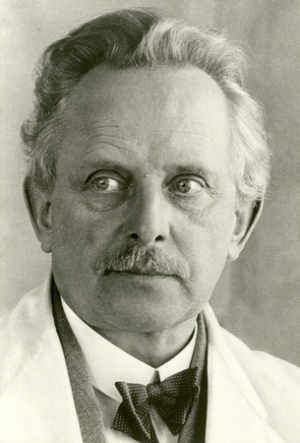Biography
Wilhelm Oskar Barnack was born in Lynow on November 1, 1879. After an apprenticeship as a precision mechanic in Berlin-Lichterfelde, his years of travel eventually took him to the Zeiss company in Jena. There he met the film pioneer Emil Mechau (1882-1945), who in 1908 went to work with the Leitz company in Wetzlar, that was still specializing in microscopes at that time. Barnack followed him in 1911 and was hired by Leitz as a foreman in the experimental department of the mechanical workshop. His area of work also included recording technology for motion pictures.
Suffering from asthma, Barnack found it difficult to carry the bulky and heavy bellows and large-format cameras of his time - at that time, one had to carry up to five kilos of equipment for twelve shots. So in 1913, the enthusiastic amateur photographer set about developing a small, lightweight photo camera that could be carried around at all times. To this end, he adapted 35mm film for use in photo cameras. The photo film format of 24×36 mm resulted from doubling the cinema format of the time (18×24 mm without perforation) by putting the film in horizontally rather than vertically as in a film camera. In Barnack's photo camera, the film material is transported horizontally with the perforation at the top and bottom. The serrated film rolls held the film in place and allowed more precision than the paper-based roll film. Thus, the archetype of the 35mm compact camera was born. While Barnack was not the first or only person to experiment with 35mm material in photo cameras (there were similar developments in France and England), no one was as resourceful in the details and ultimately as successful.
Ernst Leitz Jr. was highly enthusiastic and took an early prototype with him on a trip to the U.S. in the spring of 1914. During the First World War, Barnack, who had been released from military service, continued to develop his camera. During his practical tests, he produced the first news photo taken with a 35mm camera, showing the flooding of the Lahn River in Wetzlar. Barnack was also one of the first to show people in relation to their surroundings in such pictures. Although the photographs were primarily for testing purposes, thanks to his handy, quickly deployable camera, he created documentary images of a kind that had hardly existed before in such immediacy.
In 1924, Ernst Leitz Jr. decided against the advice of almost all his employees to release the 35mm camera for series production. It was given the name Leica (derived from Leitz Camera) and was presented at the Leipzig Spring Fair in 1925. Despite the prophecies of doom in the trade press, it quickly became a bestseller.
Although Oskar Barnack became a celebrated figure in the history of photography, his importance for the moving image remained largely unknown for decades. In fact, he also designed a motion picture camera as early as 1913, followed by two more models in 1914. With these cameras, he shot short films in Wetzlar and the surrounding area until the mid-1920s - often parallel to his photo shoots. Just like his photographs, Barnack's films are exciting testimonies to history from the last year of peace in the German Empire, the period of the First World War, and the early days of the Weimar Republic. The length of the films ranges from one to four minutes.
Barnack observed everyday moments, but also festivities and competitions in Wetzlar. In Frankfurt, he was present with his camera at a rowing regatta and a model airplane competition. He also documented the flood in Wetzlar in 1920 and captured small moments of world history, such as in his various prisoner-of-war films.
Through the precise choice of perspectives, Barnack's short films seem personal, without embedding what is shown in an overarching structure or idea, as later became common in documentary film. On a technical level, he experimented with impressionistic light-and-shadow techniques, filming speeds, and amusing trick effects. For example, "Wassersport / Kopfsprünge" shows people jumping off a diving board into the Lahn River, and then 'flying' out of the water back onto the board by filming backwards. Barnack's presumably last film was the four-minute "Reichsbanner-Umzug" from 1924.
On January 16, 1936, Oskar Barnack died of pneumonia in Bad Nauheim. Exactly two weeks earlier, he had celebrated his 25th anniversary at Leitz.
In 1979, on the occasion of his centenary, the Leica Oskar Barnack Award (LOBA) was presented for the first time. It honors photographs that "express the relationship between man and his environment." To this day, the use of 35mm film is standard in analog reportage photography. The Oskar Barnack Museum was opened in Barnack's birthplace of Lynow in 1995.
All his films are available on filmportal.de for online viewing.
